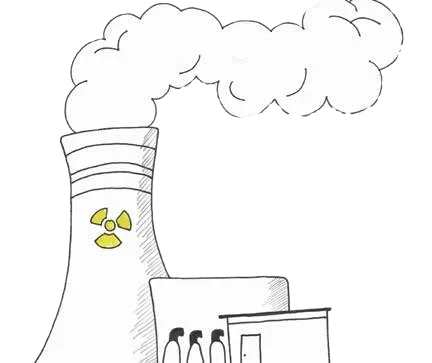
Powering the Future
Camille Marinof, LVI, weighs up the pros and cons of visionary nuclear technology, which could transform energy generation as we know it.

Camille Marinof
Sports Editor, 2025
The UK’s electricity consumption is expected to double by 2040 – but we simply do not have the productive capacity to fuel the UK by that point. While using renewable resources offers a sustainable way to supply the UK’s energy demands, it is majorly unreliable. It is important to find an alternative that can strengthen the UK’s energy security, while minimising its carbon footprint, and nuclear energy does just this. However, it isn’t advantageous, economically and socially, to proceed with our investment in nuclear energy production as we currently are doing through huge nuclear reactors. Development in nuclear energy has led us to a more cost effective, clean, and safe way of producing nuclear energy through Small Modular Reactors (SMRs) which are essentially a smaller scale version of nuclear reactors.
SMRs are a great investment for the government for a plethora of reasons. The fact that they are modular means that instead of investing billions, such as Sizewell C costing an estimated £40 billion, the UK can incrementally increase its nuclear capabilities as they decrease their funding elsewhere. Costing only £16 million per module yet producing enough energy for 200,000 to 300,000 homes, it is very cost effective in the economies of scale, especially since traditional nuclear reactors only produce around 3 times more. Furthermore, it produces mostly green energy, bringing the UK closer to its net zero goal, ultimately decarbonising the UK energy mix. The manufacturing process allows the shipping container sized reactor to be built in factories and then transported across the UK within 24 months.
Often, a major concern with nuclear energy is with safety. SMRs have passive safety systems where in the case of accidents it can essentially stop itself, requiring little operator intervention. Moreover, the smaller and simpler design means that the risk of faulty valves and other parts creating problems are exponentially decreased. While there are concerns with the jobs of fossil fuelled power plant workers being lost, an estimated tens of thousands of jobs will be created by 2050. This may cause temporary structural unemployment, but the gap will quickly be filled as these workers are trained. Additionally, although people may not support building the SMRs due ‘NIMBYism’ movement, which rejects developmental projects in residential areas, the incentive of lower energy bills and the fact that they can occupy land that is already being used for other energy process means that the general population shouldn’t be too opposed to it.
There are two current disadvantages that come with the SMRs. The technology hasn’t been fully developed yet so can only be put to use in a couple of years, leaving the UK’s energy mix stagnated while waiting. Moreover, a problem that is distinct with nuclear energy in general: nuclear waste disposal. Under the assumption that our consumption and reliance will grow more and more on SMRs, the volume of nuclear waste will also increase. While there are already safe disposal methods, the fact remains that this nuclear waste will take thousands to millions of years to decay to a safe level.
While SMRs bring some issues with them, it also offers efficiency, affordability, safety, and scalability. With forward thinking UK policies and smart investment, these SMRs could play a pivotal role in securing, developing, and decarbonising the UK’s energy mix – leaving a cleaner and greener future for Britain’s energy.